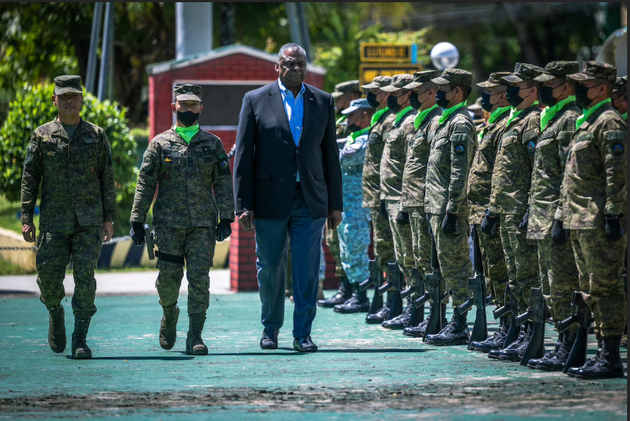An expanded US military presence at bases in the Philippines will boost the countries’ surveillance in the South China Sea and over Taiwan, but the impact on China could be limited, Chinese analysts said.
Under an agreement announced by US Defence Secretary Lloyd Austin and Philippine Defence Secretary Carlito Galvez in Manila on Thursday, the United States will gain access to four more military sites, bringing the total to nine, South China Morning Post reports. As part of the 2014 Enhanced Defence Cooperation Agreement (EDCA), the four new sites will enable the two countries to respond to “shared challenges”, and allow for more rapid support for humanitarian and climate-related disasters in the Philippines, according to a US statement.
Fu Qianshao, a Chinese military aviation analyst, said the new sites had potential to “pose a big threat to China”, given their close proximity to Taiwan and the Spratly Islands. “If it is about permanent basing, it will have a huge impact on the mainland’s plan to reunify Taiwan by force and its navigation in the Nansha Islands,” he said, referring to the Spratly Islands. “If it isn’t, then the impact will not be that huge.” The locations of the bases have not been disclosed, but in November, Lieutenant General Bartolome Vicente Bacarro of the Philippines said Washington had identified five possible sites, including two in Cagayan, one in Palawan, one in Zambales and one in Isabela. Cagayan and Isabela are in the northern Philippines. Cagayan sits across from Taiwan and Palawan is near the disputed Spratly Islands in the South China Sea.
Medium-range missiles
“The threat is even more serious if medium-range missiles are deployed. It will have a serious negative impact on the peace and stability of the South China Sea region,” he said. Fu added, however, that missiles were unlikely to be deployed at the new sites, and Manila must balance its relations with both Beijing and Washington. “The Philippine government should be aware that if it allows the US to establish permanent bases, it will also have a greater impact on the Philippines itself,” Fu said. He said that in a conflict these bases would be obvious targets for the People’s Liberation Army (PLA).
Surveillance
Song Zhongping, a military commentator in Hong Kong, said the US access to the bases in places like Palawan would allow surveillance of China’s military activities near the Spratly Islands, including aircraft, warship and submarine activity. However, Song did not rule out the possibility that the US would deploy medium-range ballistic missiles at the bases in the future, which would be “obviously aimed at China”, he said. The purpose of deploying missiles would be to enable the blockade of the Bashi Channel, which runs between the northernmost island of the Philippines and the southern island of Taiwan, Song said. In addition, Song said the missiles could intercept and attack PLA military targets such as ships and warplanes in the South China Sea.
US wants to train allies
During Thursday’s announcement, Austin called the agreement for US military access to the four sites “a big deal”, saying it was an opportunity to increase military coordination with the Philippines, but he denied that the sites would become “permanent bases”. “The EDCA is not about permanent basing here in the Philippines. It’s about providing access that allows us to increase our training opportunities with our partners, our allies here,” he said.






